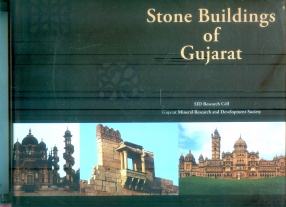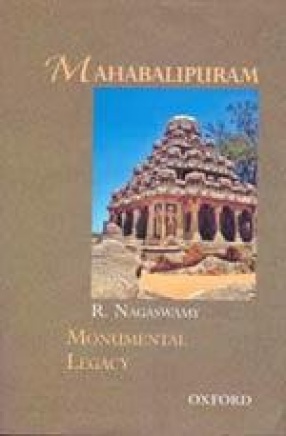Gujarat, the western landmass in the Indian peninsula, is resplendent with nature’s bounty. Its topography and geological diversity have, through eons, resulted in a vast range of stones and semiprecious stones, which have been used in many different ways: from monumental architecture to furniture, landscape elements, artefacts, tools, or jewellry. Stone craft certainly stands out as the most significant that has strongly shaped the history of architecture and interior spaces. And the Gujarat’s crafts persons, by their skills and ingenuity, have shaped stones into magnificent edifices. Gujarat today exhibits a glorious heritage in stone buildings of every kind – which finds a comprehensive documentation in this book.
An aesthetically-crafted work, the book showcases a whole diversity of stone buildings of Gujarat: temples, mosques, palaces, public buildings, tombs, cemeteries, memorials, modest residential dwellings, step-wells, tanks, lakes, forts and other defensive structures — from across the ancient, medieval, colonial and contemporary periods. Even as the primary focus here is on the use of stone in Gujarat’s built environment, the book goes deeper by dissembling buildings and studying the various components/elements that have gone into the making of the building – elements like, for instance: walls, columns, roofs, brackets, chhajjas, entrances, screens, and jalis. Each of these elements is made separately for a building and assembled and joined at the site.
Carrying many painstakingly-drawn figures and site plans, besides hundreds of at once engaging photographs, this study has been undertaken by the School of Interior Design (SID) Research Cell, CEPT University, Ahmedabad, for the Commissioner, Geology and Mining of the Gujarat Government.







There are no reviews yet.